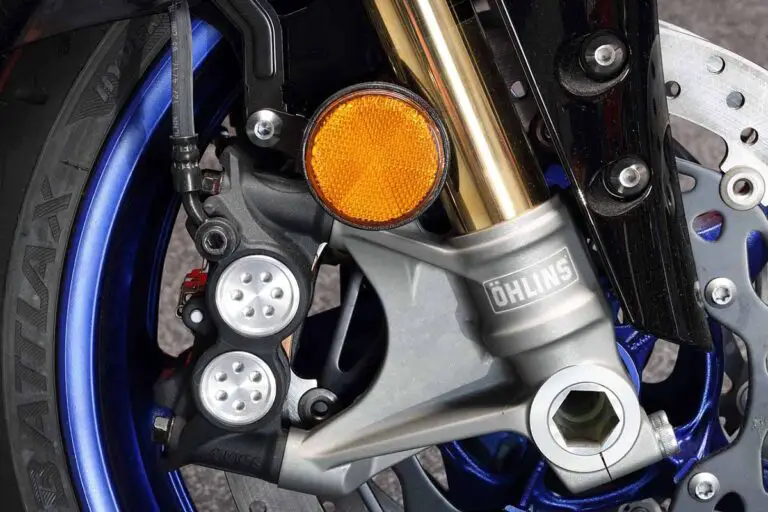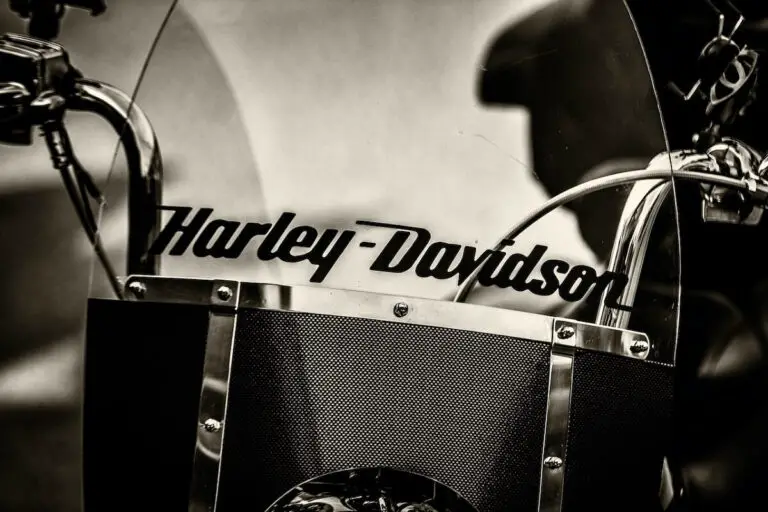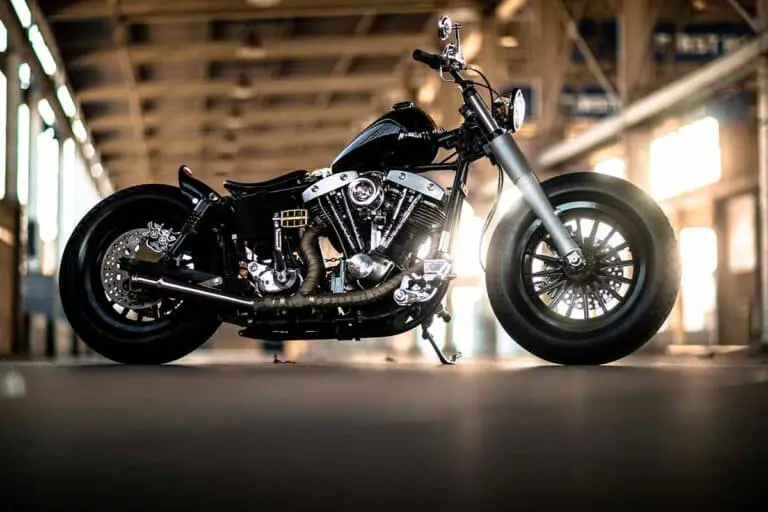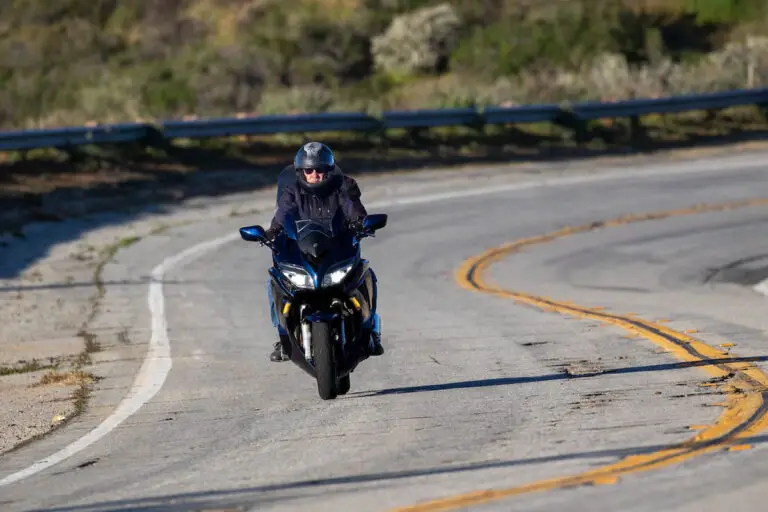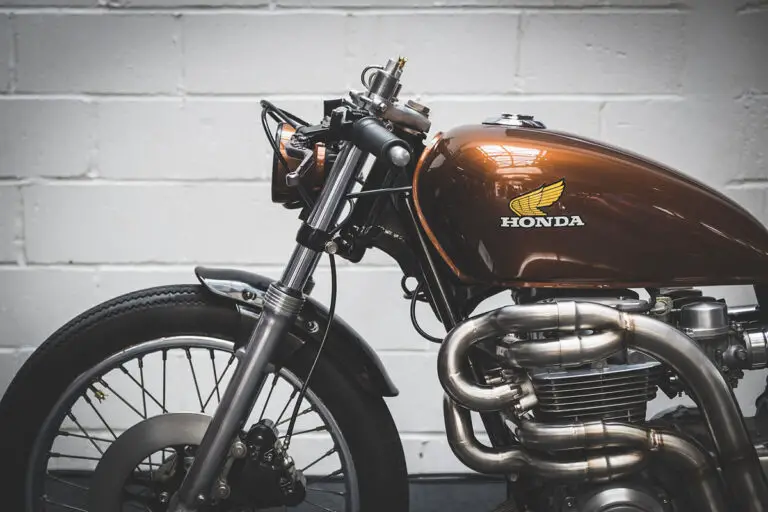What Are Chicken Strips on a Motorcycle?
Disclosure: We may get commissions for purchases made through links in this post.
Like any other type of collective, the motorcycling community has its fair share of negative perspectives and jargon. One of the most common is the term ‘chicken strips.’ But have you ever wondered what chicken strips are on a motorcycle and why having them is such a big deal? This term may not make much sense if you are uninitiated or a beginner rider.
Chicken strips on a motorcycle represent untouched portions of the tire’s tread on the outer edges, reflecting the degree of lean during turns. The term is also a slur hurled at some riders, signifying their lack of skill or bravery in negotiating corners.
While chicken strips mean unworn sections of a bike’s front or rear tire, these markings are often linked to a rider who is overly cautious and with no chance of becoming a “lean demon.” Let us delve into the factors that cause motorcycle chicken strips. I hope that by the end of this guide, you will have already gotten rid of any negative connotations associated with this term.

What are Chicken Strips on a Motorcycle?
Chicken strips on a motorcycle refer to the unused outer edges of the tires, commonly observed on sport bikes. These strips result from using (or disusing) the bike’s leaning angles. They are likewise easy to spot as they appear relatively newer than the tire’s center.
But more than denoting an uneven contact patch between the tread and the road surface, the term is sometimes employed in a derogatory way. Bert’s Mega Mall says they are Chicken Strip because the rider is too ‘chicken’ to lean the bike, and they are always sitting up straight.
Between your front and rear tires, chicken strips are never really subject to scrutiny on a typical sports bike when they occur at the front. If anything, they are more associated with the rear tire.
Front tires of sport bikes usually develop minimal or no chicken strips, except when extensively raced on dedicated tracks. Also, if your back end sits slightly higher, you will likely use more of your front tire.
Factors Contributing to ‘Chicken Strips’
Riding Style
Chicken strips vary based on the different riding styles motorcyclists have. Furthermore, the location of the chicken strip denotes specific riding behaviors.
For instance, the absence of chicken strips on the rear tire may indicate proficient riding. Meanwhile, its presence on the front suggests potential signs of early braking, delayed turning, and premature acceleration while the bike is still leaning.
Conversely, if the front tire shows no strips but the back tire does, it implies aggressive cornering and delayed acceleration (the latter occurs only when the bike is upright again).
Motorcycle Niche
Motorcycle niche, riding speed, suspension type, and the kind of frequented road surface are other facets that play into the potential development of chicken strips on a motorcycle.
Cruisers are built with low footpegs, side or center stands, exhausts, and other components that tend to take away from its cornering clearance. Inversely, adventurer bikes rarely experience this obstruction — thanks to their high, often upswept exhaust pipes and footpegs.
Driving Speed
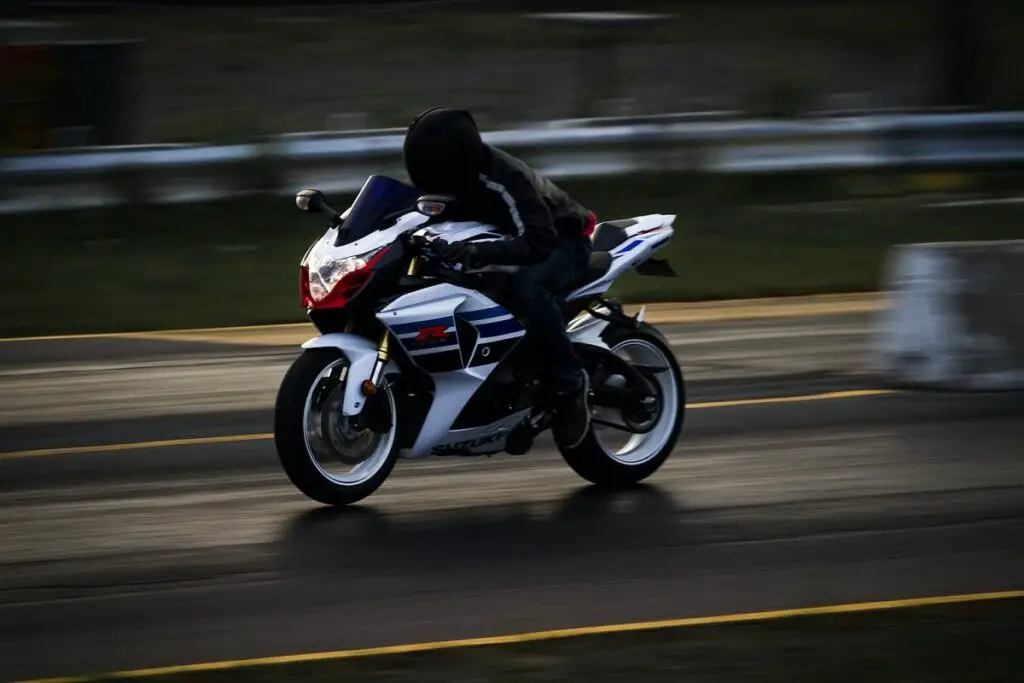
In most cases, riding at a higher or lower speed may indicate the type of rider you are and the road you frequent. However, it is not limited to being indicative of these. Riding speed determines how wide the chicken strips on your thumper would be.
Moreover, it is influenced by your motorcycle’s geometry — meaning that the design of its frame, suspension, and tire profile can impact how far the bike can lean during turns.
When riding at lower speeds or with less aggressive cornering, gearheads are more likely to maintain a more upright riding posture, resulting in wider chicken strips on both the front and rear tires. A wider strip indicates that the tire’s complete contact area is not fully engaged during cornering.
Conversely, riding with more aggressive cornering techniques or at higher speeds entails leaning the two-wheeler more and utilizing its tires’ full tread surface. This translates to your knobbies making full contact with the road, which reduces (if not eliminates) the chicken strips on your motorcycle.
Bike Geometry
Now, I did mention this factor earlier and how it influences the extent of leaning permitted on a bike, right? I am reiterating this point since it provides further insight into why we should never associate chicken strips on a motorcycle with a rider’s skill level or proficiency.
A bike with a more upright or conservative geometry would be predisposed to have wider chicken strips simply because it allows for less aggressive leaning angles. On the other hand, a two-wheeler with a sportier or more aggressive geometry, such as a sportbike, is more likely to develop narrower or even non-existent chicken strips since it can lean further.
Tire Profile
Riders know all too well that no two tires are alike. And this knowledge proves especially significant when it comes to having chicken strips on your knobbies.
Many tire options are available in the market — from bias tires to radials. As such, riders should not expect the same tires to be fitted on a cruiser versus a sports bike. Nor should they expect the same severity of chicken strips on these motorcycles.
Although slightly off-topic, chicken strips can appear on a new, freshly changed tire. When breaking in a new tire, you do not want to lean in too aggressively yet, so you might notice them more then.
Also, sports bikes and cruisers often feature low and wide tires with a flatter profile. This characteristic makes it easier for riders to utilize the full width of the tread compared to other motorcycle segments.
Road Surface
Regarding road surface affecting the width and severity of chicken strips on a motorcycle, there are three things to consider — grip, camber, and surface condition. A brief explanation for each is provided below:
- Grip. Varying levels of grip result in different-width chicken strips. High-grip surfaces, such as tracks or freshly paved surfaces, lend to more aggressive leaning and narrower or non-existent chicken strips. In contrast, low-grip surfaces such as wet or gravel-covered roads can limit the amount of lean possible, consequently leading to wider chicken strips.
- Camber. The slope or curvature of a road surface also affects the development of chicken strips. Positive-camber roads can enhance traction and promote increased leaning, reducing chicken strips. Conversely, negative-camber roads can make riders more cautious about leaning too much, resulting in wider tire markings.
- Surface Condition. Irregularities, such as potholes, debris, or uneven pavement, can dampen a rider’s confidence in leaning the bike aggressively. Even if road grip and camber permit riders to lean further, they may still choose to ride cautiously (and have wider chicken strips) if on-road obstacles or uneven surfaces are present.
Skill & Confidence
But the biggest contributors of all are rider skill and confidence. These two are closely tied (and often inversely related) to the type of road surface being navigated.
Motorheads not confident in their leaning tend to have severe chicken strips on their motorcycle because their bike never gets too deep into a turn. And yet, the same riding behavior can come from a seasoned gearhead under unfavorable or dangerous riding conditions.
Eliminating Chicken Strips on a Motorcycle

Many folks in the riding community would probably recommend leaning in deep into every corner you turn into to get rid of those ghastly (and ridicule-inviting) chicken strips. However, that option may not be the best for you. After all, aggressive leaning does not guarantee that the shiny chicken strips on a motorcycle will go away.
Some may even convince you to change your riding speed and adjust your suspension. But again, if your motorcycle and frequented riding locations do not change, these alterations will do very little in ridding your two-wheeler of chicken strips.
Others may suggest sanding down the glossy portions on your knobbies. But beware of heeding this advice! More than indicating a lack of leaning, chicken strips are parts of the tire that have not been broken in. And since these areas have not made contact with any road surface, sanding them down could potentially expose slippery sections of the tire, leading to safety concerns for your motorcycle.
Personally, the best and safest method to lose the glossy bits of your tires is to heat them — and I do not mean with a heat gun! You heat your tires by going on a “long-distance, high-speed highway ride.” By doing this, you generate heat across the entire width of your tires, even though the edge of the tread has not made contact with the road surface.
Other favorable alternatives include taking a track-based class or riding in the sand. Not only will you do a good number on those chicken strips, but you will also learn immensely from riding on a track or going off-roading (in terms of leaning proficiency and overall riding skill).
Conclusion — Chicken Strips on a Motorcycle
Whether we’d like to admit it or not, having chicken strips on a motorcycle is virtually unavoidable for most riders (unless you are a pro racer). And while there are several ways to try and eliminate these tire markings, none of those strategies are worth putting yourself or your passenger in jeopardy.
Yes, there will always be chaps who try to mock anyone they perceive as not living up to par with ‘certain motorcycling practices.’ But remember — true motorheads will never ridicule how you ride and enjoy your two-wheeler, no matter the appearance of your tires.

